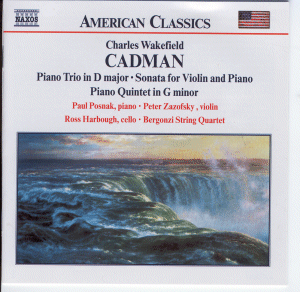 Composer: Serge Kaufmann
Composer: Serge Kaufmann
Works: Chant Concertant, Suite Yiddish, Selah, Duos for Violins, L’Eau retrouvee
Performers: Jean-Pascal Introvigne (baritone), Hubert Chachereau (violin), Cecile Moreau (violin), Philippe Pennanguer (cello), Marie-Josephe Truys (piano), Ad Libitum String Quintet, Orchestre Bernard Calmel, conducted by Bernard Calmel, Ensemble Vocal Melodia directed by Evelyne Schwab
Recording: Recorded in the Auditorium of l’Ecole Nationale de Musique d’Aulnay-sous-Bois, December 1998
Label: Pavane ADW 7420 [74.02]
Serge Kaufmann emerges as a significant yet often overlooked voice in contemporary classical music, with a style that marries lyrical expressiveness to a framework of Jewish thematic elements. This recording presents a selection of his works, including the “Chant Concertant,” a piece that encapsulates Kaufmann’s proclivity for melding emotive melodies with rich orchestral textures. His music, while rooted in tradition, seeks to traverse the boundaries of cultural identity through sound, which is evident in the emotional depth and the nuanced lyricism that characterize these compositions.
The “Chant Concertant” stands as a pivotal work in this collection, marked by its eloquent declarations and a striking contrast between its slow and fast sections. The slow introduction, beginning at 4’50, unfolds a lush, melodic line that draws upon the listener’s sensibilities, only to be interrupted by a frenetic Stravinskian allegro at 8’50. This juxtaposition of styles serves as a testament to Kaufmann’s ability to blend the traditional with the avant-garde, creating a sound that feels both familiar and refreshingly novel. The orchestration is particularly noteworthy; the orchestral slivers that punctuate the cadenza add a ghostly quality that deepens the emotional impact of the work, offering a spine of neo-classical grit that anchors its more lyrical elements.
The “Suite Yiddish,” originally composed for violin and piano, has been reimagined for cello and piano in this recording. While the three movements capture a certain Hebraic essence, they risk falling into a generic portrayal of Jewish music. The concluding “Priere,” notable for its simplicity and poignant resonance, evokes the imagery of a Jewish Celtic lament, offering a moment of introspection amidst the suite’s more conventional passages. This arrangement does not fully exploit the cello’s potential for emotional depth, leaving listeners yearning for a more adventurous interpretation.
Selah, composed for a quintet, further delves into Kaufmann’s Yiddish influences, presenting a work that is changeable and lyrical. The cello’s prominence throughout the piece shapes its emotional landscape, yet the work’s claim to greatness, as suggested in the booklet notes, feels exaggerated. The frequent unison passages, while showcasing the ensemble’s cohesion, can lead to a lack of distinct character in certain sections. The rhythmic drive toward the climax, however, is effective, demonstrating Kaufmann’s skill in building momentum despite the work’s overall simplicity.
The “Duos for Violins” provide a fascinating contrast, subtly invoking Bartok’s folk-inspired textures while remaining distinct in their approach. Kaufmann’s use of simple, associative melodies creates an inviting atmosphere, where technical demands are intentionally limited. This choice highlights the beauty of the entwined melodies, although it does leave the listener wanting for greater complexity. The absence of pizzicato and double-stopping throughout the duos suggests an intentional restraint, allowing the lyrical quality of the music to take precedence.
“L’Eau retrouvee,” a departure from Kaufmann’s more overtly Jewish themes, is a substantial cantata that opens with powerful vocal howls, setting a dramatic tone. The interplay between the baritone and the orchestral forces creates a rich tapestry, yet the untranslated text may alienate some listeners. This work demands patience, as its philosophical musings unfold over fifteen minutes, culminating in a transformation of the initial cries into affirmations of experience. While not immediately accessible, it showcases Kaufmann’s compositional maturity and ambition.
The recording itself, while technically sound, lacks the breath of life that one might expect from such intricate works. The performances, though competent, do not consistently rise to the emotional heights that Kaufmann’s music aspires to reach. Overall, this anthology offers a commendable overview of Kaufmann’s oeuvre, providing a window into his unique compositional voice, yet it also highlights the challenges inherent in translating his rich musical ideas into compelling performances. The collection invites both appreciation and reflection, positioning Kaufmann as an important figure worthy of further exploration in the contemporary classical landscape.



